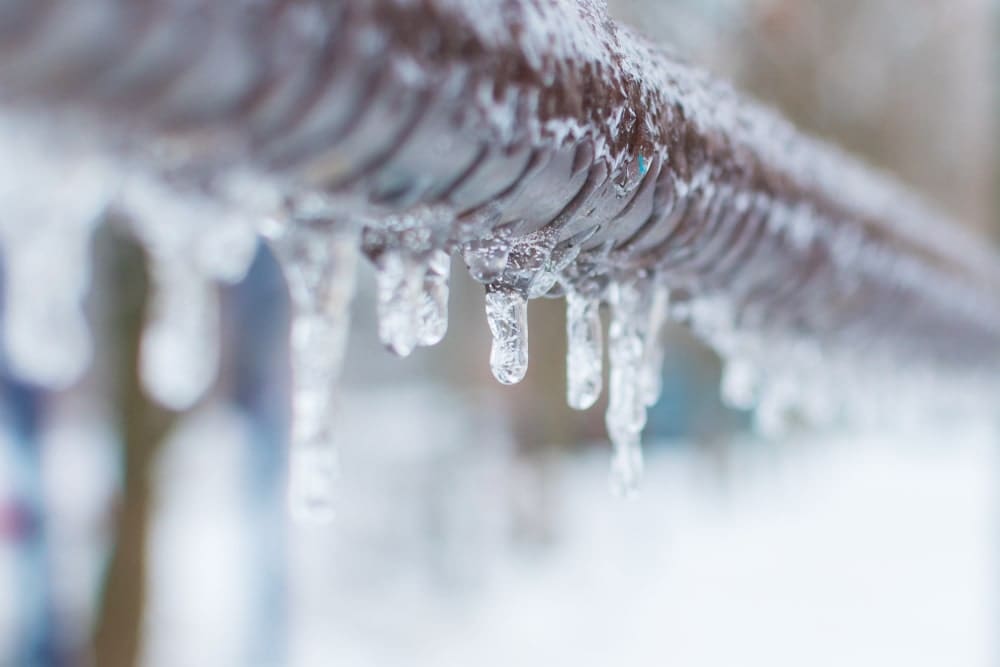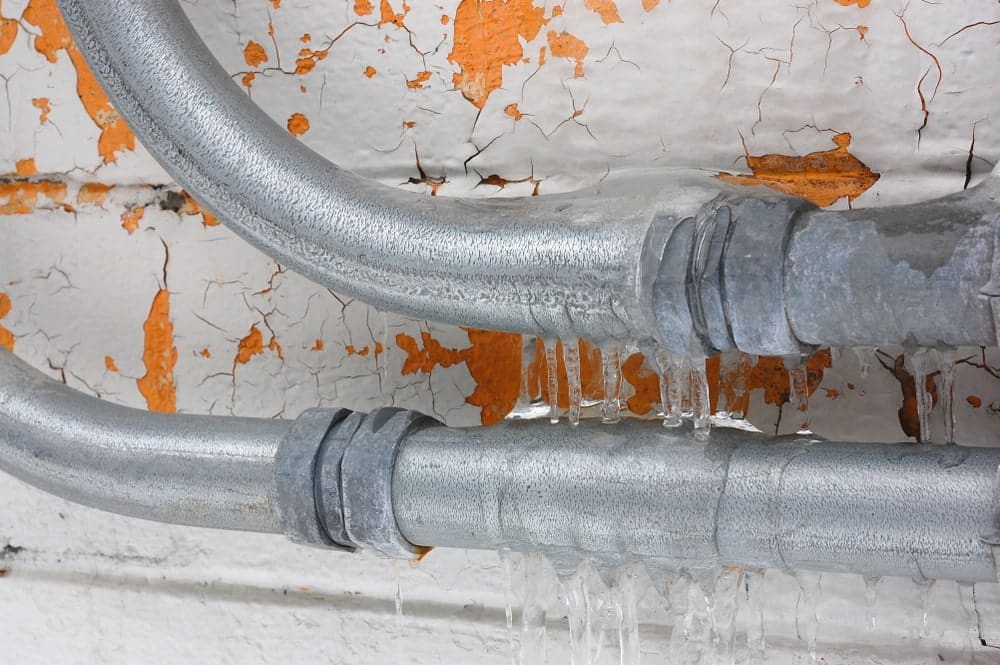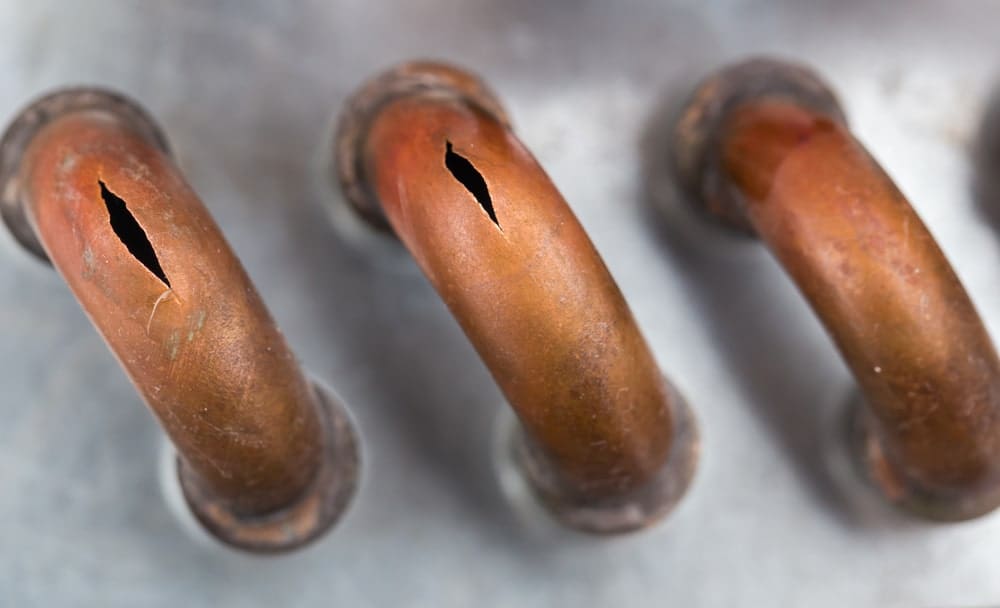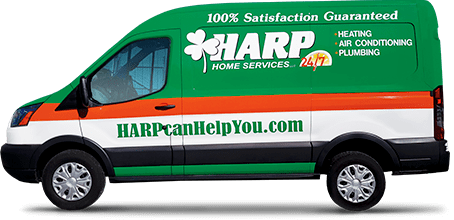
What if you could protect your home from an impending disaster in less than an hour? When you learn how to prevent pipes from freezing, you do exactly that. Freezing pipes have devastating effects on your home and are completely preventable with some minor preparation.
At HARP Home Services, we protect Connecticut property owners from frigid winters with superior plumbing and heating services. Our experiences taught us how to dodge the consequences of cold weather. We’ll let you in on our industry knowledge below.
Why Do Pipes Freeze?

Pipes freeze because of prolonged exposure to frigid temperatures. Keeping your home above 55 degrees significantly reduces the likelihood of a winter plumbing catastrophe. Therefore, annual heating maintenance and tune-up services are a must to avoid significant temperature shocks.
However, your pipes might still freeze during dramatic temperature dips, especially events that bring ice and snow. Water pipes freeze when the water trapped inside turns into ice. The temperature shifts also affect the pipe materials by constricting them.
If you turn on your water supply to a frozen pipe, the pipe rapidly expands, and the water melts. This shocking pressure ruptures the pipe materials and causes a cataclysmic indoor flood.
Symptoms of Frozen Pipes
Turning on a faucet only for a weak trickle or no water at all to flow out is the first sign of frozen pipes. Turn the faucet off and inspect your exposed plumbing for other clues, such as:
- Noticeable bulges or cracks in a pipe’s structure
- Frost encasing the outside of the pipes
- Whistling or shrieking sounds from escaping air
- Water stains on walls, ceilings, or floors

Call an emergency plumber immediately to mitigate the damage and repair any broken pipes. They can safely thaw and service your plumbing system.
Top 7 Tips To Prevent Frozen Pipes
As the adage goes, an ounce of prevention is worth a pound of cure. The best approach to icy pipes involves avoiding them in the first place. Add the following tips to prevent pipes from freezing to your winter maintenance routine.
1. Insulate Pipes
Exposed plumbing is more vulnerable to freezing temps, especially in unheated areas of your home. Insulate pipes located outdoors, under sinks, and in basements or crawl spaces. You can purchase pipe sleeves and other insulation materials at most home improvement retailers.
Alternatively, a tight newspaper or cardboard wrap followed by duct tape works well. These recyclable materials effectively retain heat. The tape will keep moisture out while ensuring the insulation stays in place.
2. Keep Your Home Heated
Set your thermostat to a minimum temperature of 56 degrees throughout the winter, even when you go on a holiday trip. The heat inside your home creates a warmer ambient temperature for exposed and covered plumbing. Remember to handle all heating repair or maintenance services before winter weather settles in your location.
3. Try Heat Tape or Heat Cables
Heat tape and cables are fantastic products to prevent pipes from freezing. You can easily purchase them from a home improvement retailer. Simply wind the tape or cable around vulnerable pipes. These implements will handle the rest. You can remove the adhesives once spring arrives.
4. Open Kitchen Cabinets
Maintaining a warm, ambient temperature is half the battle. Most sinks have plumbing hidden inside the cabinets beneath them. Remember to open the cabinet doors when temperatures drop below freezing. Your home’s heated air will keep water and pipe temperatures from plummeting.
5. Seal Up Cracks in Exterior Walls
Drafty areas in your home allow warm air to escape outdoors while cold air replaces it. This exchange forces your HVAC system to work harder and catapults your energy bills into the stratosphere. It also leeches heat from your water supply lines, increasing your risk of a burst pipe.
Check walls for small openings you might have ignored previously. Baseboards and electrical outlets are common but often undetected draft sources. You might discover spaces along your window frames, holes for cables and other electrical components, or openings beneath your doors.
Use caulk to seal these exposures and eliminate unwanted airflow. Alternatively, place towels or old blankets along the draft areas surrounding windows and doors for extra protection. You can also install thick fabric curtains to halt air exchange and keep your indoor temperatures more stable.
6. Let Water Drip
One of the most well-known methods to prevent frozen pipes is to allow water to gradually drip from your indoor faucets. Turn the hot water knob and let a slow trickle of warm water escape the faucet each night.
Moving water takes longer to freeze. Plus, the heat will keep your pipes from freezing solid. You can also run your dishwasher and washing machine right before you hit the hay.
These appliances use lots of hot water to scour dirty dishes and laundry. Their cycles can last for an hour or more, depending on the load and cycle settings. It’s a great method to preheat your plumbing while you fall asleep.
7. Shut Off the Water Supply If You Are Away
Finally, take control of your plumbing during vacations, family visits, or business trips. Your absence doesn’t have to put your plumbing in danger. Complete the plumbing checklist below before taking off on your next exciting adventure:
- Ask for checkups: Talk to a neighbor, friend, or family member about checking on your property while you’re away. They can quickly report any concerning occurrences.
- Change your thermostat settings: Trips are opportunities to save money on energy bills. However, you shouldn’t set your thermostat lower than 55 degrees to avoid frosty pipes.
- Turn off your water supply: Cut the water supply just before you leave. The pipes are less likely to freeze without a steady water flow.
- Drain the pipes: Finally, turn on the faucet of each plumbing fixture, including sinks and tubs. The remaining water will drain out of the pipes.
These simple steps can give you peace of mind while you enjoy your trip.
Call HARP for Pipe Repair and Installation
Let HARP Home Services help you prevent pipes from freezing and maintain your HVAC and plumbing systems. We offer same-day plumbing services at 1-860-544-2685. You can also book your service online.


